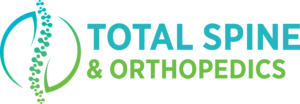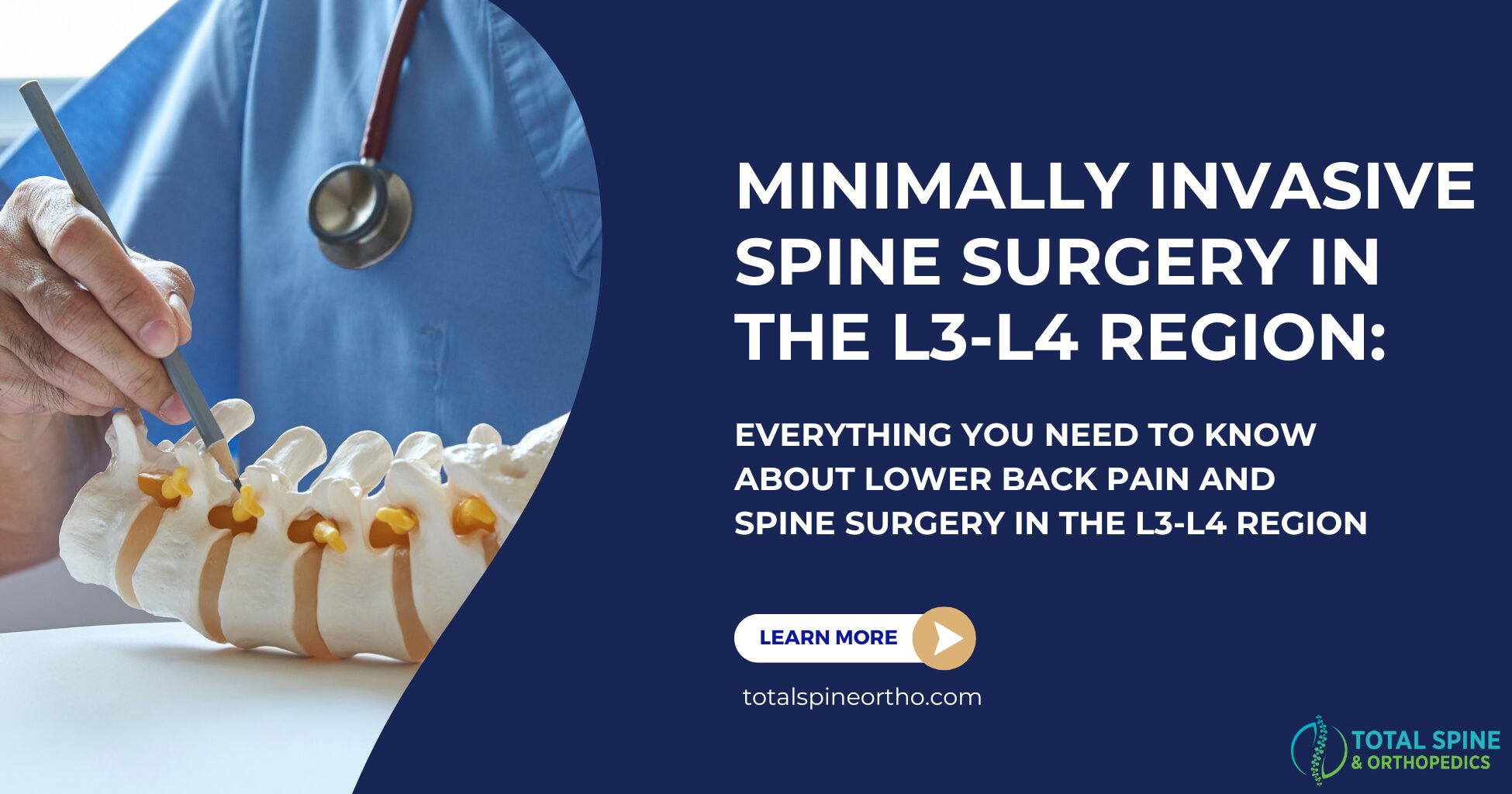Back pain is a widespread issue and has been estimated to affect as many as 80% of adults at some point in their lives. Severity can range from a mild annoyance to a debilitating condition that interferes with daily activities. The lumbar spine, especially the L3-L4 region, plays a critical role in supporting our body's weight and enabling movement. When problems occur in this area, they can significantly impact your quality of life and cause back pain and other symptoms.
Minimally invasive spine surgery (MISS) has transformed the way we treat lumbar spine conditions. Using advanced technology and techniques, surgeons can address spinal issues with less trauma to the body, leading to quicker recoveries and better outcomes. This guide aims to shed light on minimally invasive spine surgery in the L3-L4 region so you can better understand these areas, how they cause pain, and what can be done to treat it.
Understanding the L3-L4 Region
The lumbar spine consists of five vertebrae labeled L1 through L5, located in your lower back between the rib cage and pelvis. These vertebrae are the largest and strongest in the spinal column, designed to bear the weight of the upper body and allow for flexibility and movement.
The L3-L4 segment sits in the middle of the lumbar spine and is vital for weight-bearing, movement, and nerve function. It supports much of your body's weight and enables bending and twisting motions. Nerves exiting at this level control muscle movements and sensation in your lower extremities, so issues here can lead to pain and neurological symptoms.
Common Conditions Affecting L3-L4
Several conditions can affect the L3-L4 region:
Herniated Discs
A herniated disc occurs when the soft inner core of a spinal disc pushes through a crack in the tougher outer layer. In the L3-L4 area, this can press on nearby nerves, causing back pain, leg pain, numbness, or weakness.
Spinal Stenosis
Spinal stenosis is the narrowing of the spinal canal, which can compress nerves. Degenerative changes like bone spurs or bulging discs often cause this narrowing. Symptoms may include pain during walking or standing that improves when sitting or bending forward.
Degenerative Disc Disease
This condition involves the breakdown of intervertebral discs, leading to reduced cushioning between vertebrae. In the L3-L4 region, it can cause chronic low back pain and stiffness that worsens with activity.
Spondylolisthesis
Spondylolisthesis is when one vertebra slips forward over the one below it, potentially compressing nerves. It can result from degenerative changes or congenital defects, leading to back pain and hamstring tightness.
What Is Minimally Invasive Spine Surgery?
Minimally invasive spine surgery involves performing procedures through small incisions using specialized instruments and imaging technology. Unlike traditional open surgery, which requires larger incisions and more muscle disruption, MISS aims to minimize tissue damage. Surgeons such as those at Total Spine use tools like tubular retractors and endoscopes to access the spine with less impact on surrounding tissues.
Benefits of Minimally Invasive Procedures
Choosing minimally invasive surgery offers several advantages:
- Smaller Incisions: Leads to less scarring and a lower risk of infection.
- Reduced Blood Loss: Decreases the need for blood transfusions.
- Less Muscle Damage: Preserves muscle function and reduces postoperative pain.
- Faster Recovery: Shorter hospital stays and a quicker return to daily activities.
- Less Postoperative Pain: Decreases reliance on pain medications.
- High Success Rates: Provides effective symptom relief with lower complication rates.
The Minimally Invasive Surgery Process
Preoperative Assessment
Your surgeon will conduct a thorough evaluation, including your medical history, a physical examination, and imaging studies like MRI or CT scans. These help pinpoint the exact cause and location of your spinal issue.
Surgical Procedures
Common minimally invasive procedures for L3-L4 conditions include:
- Microdiscectomy: Removes herniated disc material pressing on nerves.
- Laminectomy: Removes part of the vertebral bone to relieve nerve pressure.
- Spinal Fusion: Stabilizes the spine by fusing two or more vertebrae.
- Endoscopic Spine Surgery: Utilizing a very small magnification device called an endoscope, various procedures can be performed using extremely small incisions
Recovery and Rehabilitation
Postoperative care is crucial for a successful outcome.
- Immediate Recovery: Post-operative pain is typically minimal and can be managed with medications, and you'll be encouraged to start walking and resume your daily activities fairly quickly after surgery.
- No Hospital Stay: Most minimally invasive procedures do not involve a hospital stay.
- Physical Therapy: Helps strengthen your back and improve mobility.
- Activity Guidelines: You'll receive instructions on what activities to avoid and when you can resume normal routines.
- Follow-Up Care: Regular appointments to monitor your healing progress.
Potential complications are rare but can include infection or issues with hardware placement. Your surgical team will discuss these risks with you beforehand.
Is Minimally Invasive Surgery Right for You?
Ideal candidates are those who haven't found relief with conservative treatments like medication or physical therapy and have specific conditions suitable for MISS. A consultation with a spine specialist such as the team at Total Spine is essential to determine the best treatment plan for your situation.
Considerations include:
- Severity of Symptoms: How much your condition affects your daily life.
- Overall Health: Your ability to undergo surgery.
- Personal Goals: What you hope to achieve after surgery.
If you're experiencing lumbar spine problems, consider reaching out to our expert team at Total Spine and Orthopedics. We're here to help you explore whether minimally invasive spine surgery is the right path for you. To get started, fill out the form below!
Disclaimer: This information is for educational purposes and should not replace professional medical advice. Please consult a healthcare provider for personalized guidance.


